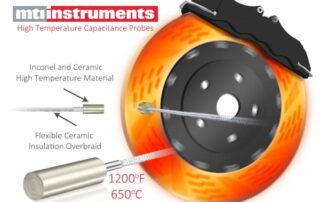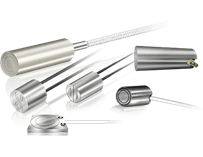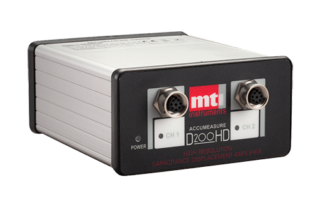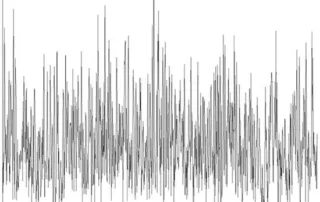Blogs
Exploring the Different Types of Aircraft Vibrations
There are two main types of aircraft vibrations: normal and abnormal. Normal vibrations regularly occur when an airplane is in flight and during takeoff and landing. These oscillating or reciprocating motions do not indicate potential defects with the aircraft or its engines and can be explained by routine operations such as flying through turbulence or extending or retracting the landing gear. With abnormal vibrations, a mechanical defect or condition is to blame. If this is not corrected, further damage and even catastrophic failure may occur. What are the causes of aircraft vibrations? The causes of aircraft vibrations include: engine [...]
Measuring Brake Rotor Thickness Variation with Capacitive Sensing
Brake rotor thickness variation, or disc thickness variation (DTV), causes uneven wear to brake rotors, disc-shaped automotive parts that are squeezed between brake pads to slow or stop a vehicle’s wheels. When a brake rotor has areas of different thickness, the amount of clamping force that’s applied across the rotor’s surface varies. These differences in clamping force lead to difference in torque, and the results may include brake shuddering, pulsating, or vibration. Even under normal driving conditions, brake rotors are subjected to extreme conditions that can cause performance-related issues. To ensure that brake rotors can perform properly without problems such [...]
Measurements Using Capacitive Sensors
Capacitive sensors can be divided into two categories based upon their performance and intended use. High resolution sensors are typically used in displacement and position monitoring applications where high accuracy, stability and low temperature drift are required. Quite frequently these sensors are used in process monitoring and closed-loop feedback control systems. Proximity type capacitive sensors are much less expensive and are typically used to detect the presence of a part or used in counting applications. Applications Position Sensing General positioning is probably the most common application for capacitive sensors. As mentioned about, [...]
Capacitance Guide for Industrial Applications
Accumeasure Digital Capacitance System D Series Gen 3 View Product Capacitance Displacement and Gap Measurement Probes View Product Accumeasure Analog Capacitance System View Product Basic Principles Capacitance is the ratio of the change in an electric charge to the corresponding change in its electrical potential (i.e., voltage). Capacitors, components that that have the “capacity” to store an electric charge, consist of conductive parallel plates that don’t touch or connect with each other. Instead, these metal plates are electrically-separated by air or a layer of insulating material (i.e., the dielectric). MTI’s technology [...]
Electronic & RF / Radio Frequency Noise
Electrical and RF noise appears in a wide variety of forms. Noise of this nature has a direct effect on electronic and radio frequencies. Electrical and RF will appear in all electronic and RF systems and can directly affect and even limit performance capabilities of a wide variety of systems. The nature of noise is random which means that it’s impossible to eliminate the effects it has on systems. The moment noise has entered a system it’s impossible to remove it. With that being said, however, it is possible to filter out some of the sound (in some instances) though this [...]





